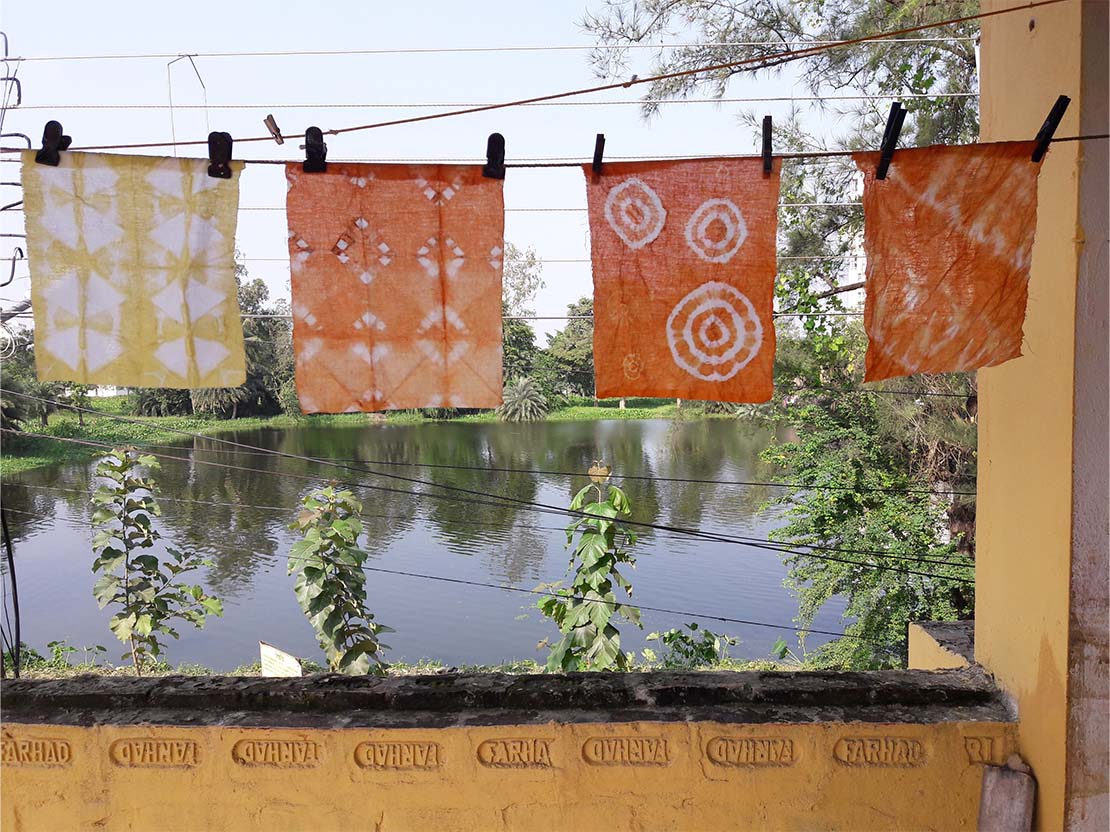
Low impact materials
Water and Chemical Compliance
Through use of sustainably sourced raw materials and introducing new and innovative technology in factories, we will continue to challenge ourselves and supplier partners to reduce, recycle and reuse 40% of our water footprint by 2030.
Being a cotton-led brand, with 68% of our products containing cotton, we are part of a sector that accounts for 70% of annual freshwater withdrawals. We already know that we can drive significant change by converting to the best organic farming practices that use up to 80% less water.
In FY23 we mapped 100% of our water footprint, using 2020 as our baseline year.
To understand water consumption per garment we used the Higg Index’s Product Tool which supplies industry leading benchmarks covering the full garment lifecycle from raw material to processing, shipping, selling, use and end of life.
Results indicate a significant water saving in cotton product, driven primarily by our conversion to organic cotton which saves up to 87% water compared to conventional cotton.
Our total garment water footprint from the 100% mapped in FY22 equated to 12.8 billion litres, the equivalent of 855 million buckets of water and an average reduction of 18% per garment.
In FY24 we will continue to map our footprint using the Higg Index, as well as work with all key factories to ensure they have water reduction initiatives in place.
We are confident that, with current initiatives in place, we will achieve a minimum 20% saving by 2024, on the way to achieving our 2030 goal of 40%.
Selecting the right low impact fibres & tracking their impact
Growing and producing fibres we use in our products – from cotton through to polyester – accounts for a significant part of the product’s overall water footprint. We are focusing on switching to materials which consume less water during production, such as organic cotton, linen and Tencel.
Switching to organic farming methods: From initial mapping of the raw materials we use using the HIGG Index, we know our largest water footprint is from cotton which we use in 68% of the garments we produce.
Switching to organic has a significant impact on the amount of water used in the production of cotton, reducing raw material water consumption by 87%. This is one of the reasons that we are so passionate about converting to organic cotton - 30% of our cotton garments have already switched to organic, with all pure cotton garments moving to ORGANIC BY 2025.
Closing the loop on garment waste: Increasing the amount of fabric waste we recycle, notably in closed loop systems. Using recycled cut waste in our garments reduces their water footprint by up to 95%.

We are working with our own operations, suppliers & wet processing units to use water efficiently.
Efficient technologies and processes: There is some amazing innovation happening in this space, including the development of closed loop systems and eco wash technology which can reduce the water consumption of the wash process by over 80%. We are also working with our suppliers to ensure they are utilising the best possible technology to harvest water, with 31% of our factories already utilising rainwater harvesting systems.
Ongoing risk assessment: As part of our supply chain water risk assessment, we mapped the locations of our factories using the World Resources Institute’s (WRI) WATER SCARCITY DATABASE and use this map to prioritise suppliers based on levels of water scarcity. 48% factories are in areas of low to moderate water stress; 52% of our factories operate where there is moderate to high water scarcity, of these factories - 44% have installed technology to harvest and save water to date.
Own operations: Last year we used 43,505m3 of water across 31 offices and 245 stores, meaning an average of 158m3 per location (the average household uses 124m3).
We know that reducing our water footprint is essential, and we want to lead positive change by collaborating with our suppliers and partners to conserve this precious natural resource.
Chemical commitments
We need to use chemicals to help produce our garments – from washing to dying the fabrics; however, we want to ensure these chemicals do no harm our planet.
Aligning with leading platforms, in FY21 we joined the Apparel & Footwear International RSL Management (AFIRM) working group and Zero Discharge of Hazardous Chemicals (ZDHC) programme (as a ‘friend’) to help us progress, collectively, along our roadmap to eliminate hazardous chemicals.
We have committed to ZDHC compliance by 2030; we are aiming for all Tier 1 suppliers to reach ZDHC Foundation Level by FY25, and all Tier 1 & 2 suppliers to reach ZDHC Progressive Level by 2030. Recognising the severe impacts of PVC, we have eliminated it from our products from Spring Summer 23.
Our top 25 suppliers are registered on the ZDHC portal and ‘Supplier to Zero’ programme to provide information about the chemicals they use to make our products. We are also working with all suppliers to map the full wash process across our supply chain.
